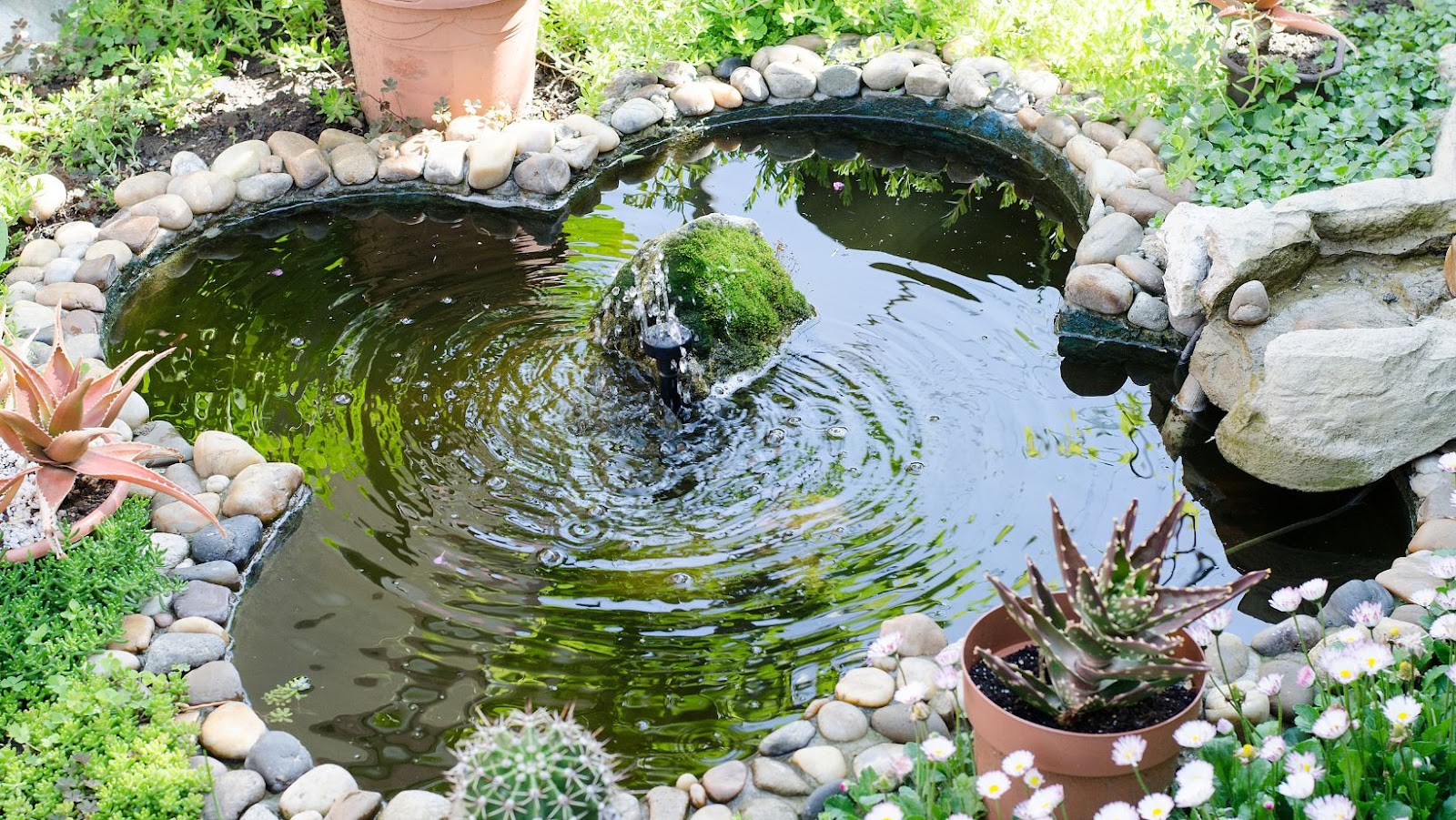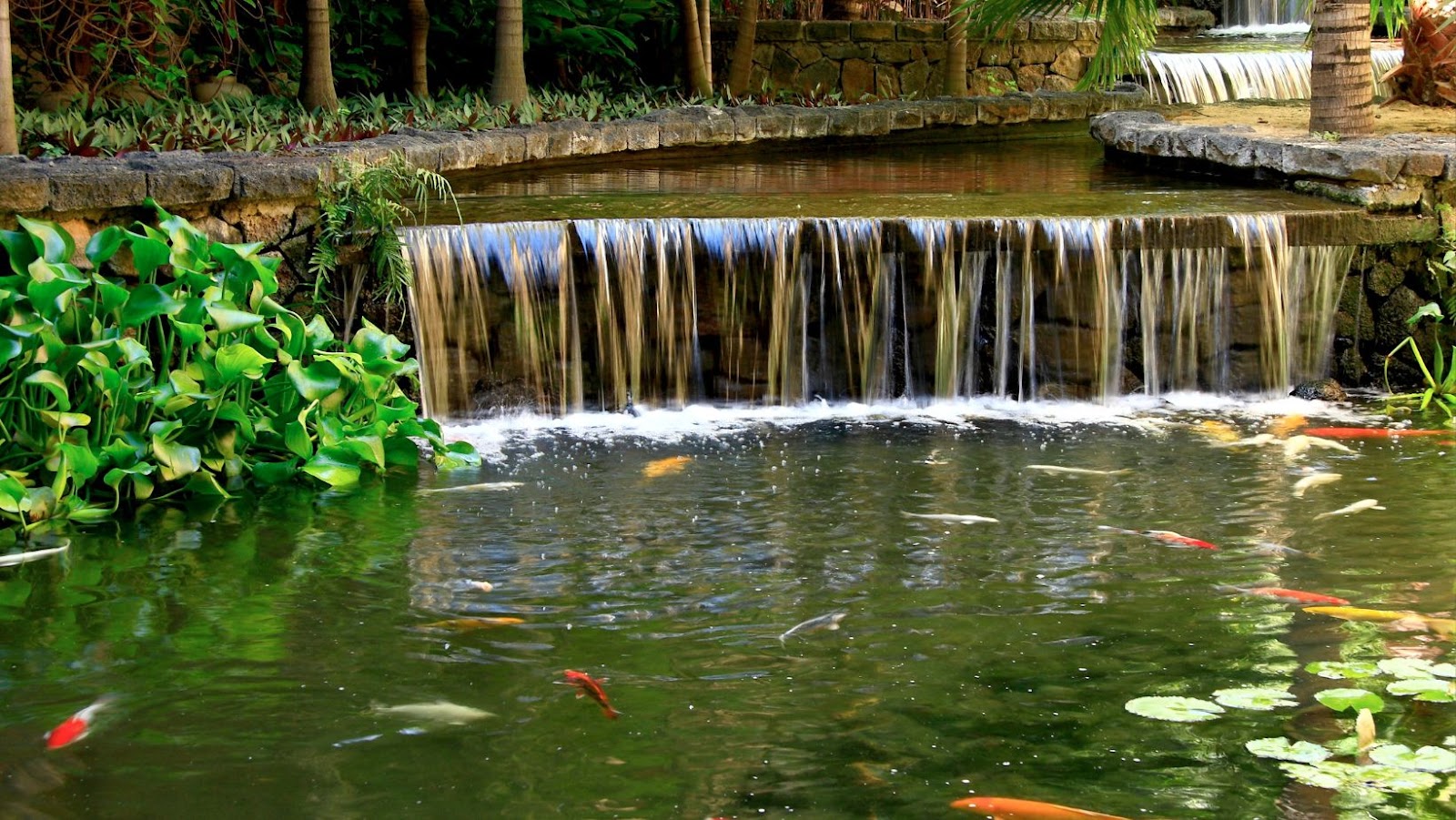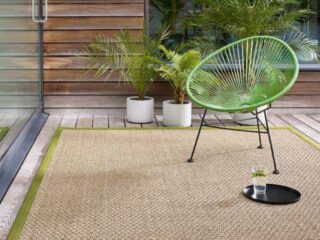
A backyard pond with a waterfall can serve as a beautiful and engaging focal point for your landscaping, offering aquatic plants, flowers, fish, and other wildlife an inviting space to live and thrive. Ponds with running water are also associated with higher quality of life aesthetics, potentially increasing the value of your property. Whether you’re seeking relaxation activity in the form of wildlife watching or fishing, creating a backyard pond with a waterfall is an excellent way to make better use of your outdoor space while making it more aesthetically pleasing.
This guide will explain the process of creating such a pond, step-by-step. All necessary supplies are available at most stores where gardening tools and products are sold. If you have any questions along the way, consult with a knowledgeable garden center professional before beginning work on your project.
Benefits of a Backyard Pond with Waterfall
Having a beautiful backyard pond with a waterfall is an attractive and peaceful addition to any home. A backyard pond with a waterfall can provide a calming and relaxing atmosphere in your outdoor space, as well as improve the environment by attracting birds, butterflies, and other wildlife. Furthermore, this type of landscaping feature can help with water conservation and reduce noise levels in your yard.
Let’s take a look at some of the other benefits associated with building a backyard pond with waterfall:
Adds Beauty to Your Home
Adding a backyard pond with waterfall to your home offers many benefits including its aesthetic value. Not only does a beautiful pond give your landscape an idyllic feel, its relaxing sound of water cascading down rocks and splashing into the pool below can provide hours of peaceful relaxation for both you and your guests. A backyard pond could also act as an attractive focal point that could determine the ambiance or look of an outdoor area.
As with most garden features, the size, shape and type of display will depend on personal preference and the space available. Whether it is a large, simple pool or a small decorative mountain stream waterfall with multiple tiers, there is sure to be something that adds beauty to your outdoor living space.
Increases Property Value
Adding a backyard pond with a waterfall is an excellent way to improve the look and value of your home. The presence of a waterfall in your garden instantly makes it more attractive and can add thousands of dollars to the overall property value. Furthermore, water features such as ponds are great aesthetically and are proven to be enjoyable features that many people enjoy in their backyards. For anyone looking to increase the marketability of their house, having a well-designed water feature such as a pond or fountain is both beautiful and profitable.
Additionally, ponds and other water features are quite low on maintenance with periodic cleaning being all that is necessary for upkeep. Therefore, these can make for great additions for any garden atmosphere.
Creates a Relaxing Environment
A backyard pond with waterfalls brings the beauty of nature to your yard and provides a peaceful environment where you can meditate and relax. The sound of trickling water can be calming and create an atmosphere of serenity in your space. A pond and waterfall also makes an attractive companion to an outdoor patio, deck or garden. Whether by day or night, they act as wonderful focal points that draw the eye from every angle.
In addition, a backyard pond with waterfalls plays a key role in creating a vibrant ecosystem for birds, butterflies, small mammals, amphibians and other wildlife. Such areas support beneficial insects like dragonflies that consume vast amounts of harmful insects like mosquitoes. Whatever type of look you prefer for your outdoor area – natural or more formal – adding a relaxing water feature to your landscape has numerous benefits that will bring you years of enjoyment!
How to Build a Backyard Pond with Waterfall
Building a backyard pond with a waterfall is a great way to add a unique, beautiful feature to your outdoor space. It can not only add a unique element to your landscape, but also provide a calming, peaceful atmosphere. Additionally, a backyard pond can also provide a habitat for birds and other wildlife, as well as a place for you to relax and watch the wildlife.
You can build a pond with a waterfall relatively easily, so let’s look at the steps involved:
Choose a Location
When choosing a location for your backyard pond, keep in mind the size of the pond and waterfall that you want to create. Be sure to keep it away from trees or any sources of debris that may end up in your pond over time. It’s also important to make sure the area is level and not prone to flooding.
Find an area that gets five or more hours of sunlight each day so the plants in the pond have enough light. Also, plan for room around the edges of the pond for planting so there is plenty of ground cover and vegetation to reduce erosion risks. If possible, try to plan your waterfall at a lower elevation than where it will be placed in your yard or garden so it can make use of gravity when creating its natural flow pattern.
Once you’ve chosen your desired location, mark off its boundaries with stakes and string as a guide for digging later on. It’s important to get accurate measurements so you can purchase enough supplies for constructing your backyard pond and waterfall properly.
Design the Pond
Designing and building a backyard pond takes some preparation. Before you begin, make sure to have a general idea of the shape and size that you want for your pond. It is important to consider how this will fit in with your surrounding landscaping and the amount of permanent space you have available for maintenance purposes. Additionally, take into account any safety concerns, particularly if young children will be near the water.
When drawing out your design for the pond, decide whether you want it to be straight or curved and make sure to add any slopes that are necessary for a waterfall or stream feature. This design stage can be done on paper or digitally using software such as Landscaper 3D (and there are even smartphone apps). Modeling your project first can help reduce costs as well as help plan out a more creative look and achieve desired results in an efficient way.
Once your design is complete, use measurements from it to determine how much landscaping material is needed (gravel and rocks) as well as how much liner was needed when purchasing materials. Also consider the other equipment required including pumps, filters, lighting systems and aerators to ensure that everything is budgeted correctly before beginning construction of the pond.
Dig the Hole
When you’re ready to begin your project, one of the most important steps is to properly dig the hole for the pond. Make sure it’s big enough – usually at least four feet wide and two feet deep – and leave a few extra inches at the bottom of the hole. This extra bit of digging will give you more room to install larger pieces of rock and make sure that your rocks don’t protrude above the surface after they are installed.
Another important task related to digging the hole is making sure that you level it properly so it has a gradual slop from one side to the other. This will allow your pond to fill up evenly, rather than settling into a corner or sinking down in a single area. You should also check for obstructions such as tree roots, stones or other hard objects that could damage your pond liner once it is put in place. Once you’re happy with how everything looks, you can start adding your liner!
Line the Pond
Once the liner is determined, the next step in how to build a backyard pond with waterfall is line the pond. Before laying it in place, consider adding an underlayment such as EPDM rubber or better yet polypropylene geotextiles. High quality fabrics are permeable so water can pass through them yet strong enough to help secure and evenly distribute the weight of the liner to protect it from punctures.
Unfold and spread out the liner at this point, taking care to avoid contact with sharp objects or rocks.
- Line the sides and bottom of your pond first.
- Form a channel for your waterfall by cutting several notches along one side wall of your above-ground pond.
- Spread out one end of your remaining piece of liner along flat ground on a nearby hillock if desired as this will become part of your cascade or waterfalls.
Make sure that you double check all measurements before cutting as most liners can’t be patched easily after they are cut making them prone to leaks which could cause harm to any aquatic life in your pond.
Install the Waterfall
Installing a waterfall into your backyard pond is a great way to add variety and texture to the landscape. The sound of rushing water can help to mask city noise and create a serene retreat for you, your family and visiting wildlife. Building an aesthetically-pleasing waterfall from scratch isn’t hard if you have the right materials and tools.
Before you begin building the waterfall, it’s important to make sure it meets all local zoning and construction requirements so that it can be installed legally. Check with your local municipality for any specific regulations concerning the installation of waterfalls or ponds in your area. This will also provide an indication of electrical requirements, such as whether or not there should be a grounded outlet near or around the pond or other safety measures that need to be taken.
Once you’ve addressed any necessary legal permits for installation, double-check that all materials are readily available on site before beginning construction. Here’s how to build a backyard pond with waterfall:
- Dig out the location for the pond first. Be sure it is deep enough for whatever aquatic plants or wildlife you plan on having in it later on (typically at least 18” deep). Make sure this area is excavated far enough away from trees or other plants so their roots don’t puncture through its walls later on down the line. Once this is done, position your flexible liner into the ground and shape it as desired using stones or rocks arranged at its edges as an anchor point (the larger these anchors are, the more stable they will hold your liner in place).
- Begin constructing your waterfall by adding stones around its edges with mortar paste so they stay firmly in place (these should ascend towards either side of where they connect with the liner). Once this has been done successfully, use sealant around each individual stone block before affixing them together using silicone sealant until you have created one consistent border for your waterfall design concept that transitions steadily upwards as desired. Feel free to get creative here – popular shapes include curved lip stands than increase gradually over time toward one side of their banked sides before cascading down off at another end. You may want to include a few levels along this lip depending upon how fast/slowly you want water streaming from it – make sure each section is securely fixed in place after adding another level (consider bonding stones together with clear plastic strips where two pieces meet if needed).
- Place gravel into bottom segments of the area beneath the waterfall now so water will filter properly within them when filled later on – select size here according to size pebbles chosen around base perimeter nearby too! Move onto next step which involves connecting tubing used ‘weir’ crevices created – one linked up top cascades down while second connected below gathers overflow pushed by pump then drained off path away aside while filling main feature basin itself whenever needed! Finally finish project off joining reservoir situated directly above backside lower portion feature near entrance/exit step stair area providing both input connection source lovely peaceful bubbling noise emanating running below surface pleasing relaxation experience users eventually gain access swimming above grounds after setup finished being completed off properly!
Add Plants and Fish
The finishing touches to your beautiful backyard pond and waterfall include adding fish, plants and ornaments. Many of the aquatic plants can be potted in submerged containers with the top of the pot at water level. Be sure to research native aquatic species before introducing new fish into your pond. Also, avoid overcrowding which can lead to increased pollution and a decrease in oxygen – two major stressors for fish.
Ornaments are also a great choice for decorating your pond. But before you go out and stock up on decorations make sure they will create a safe environment for the animals living in it – avoid sharp edges, large appliances, nets or anything else that could be hazardous for small creatures. Be sure to include various plants in different shades of colors as this will give your pond depth and make it look more natural.
Pond plants such as Water Lettuce or Water Hyacinths are not only picturesque but they also help filter water while creating cover for smaller creatures living in the water below.
Conclusion
Installing a backyard pond with a waterfall is a relatively easy process that not only provides your home with added beauty and relaxation, but can give you a sense of pride in your craftsmanship. A backyard pond with waterfall can also be used to attract wildlife, particularly birds who enjoy wading in shallow waters as well as feeding off the fish life.
Every care should be taken to position your water feature somewhere safe from predatory animals and children. Furthermore, regular monitoring should be done to ensure the condition of the water is suitable for all living things. If done properly, you can enjoy this natural haven for many years to come.







